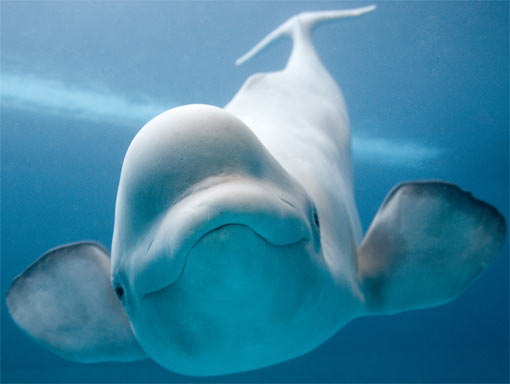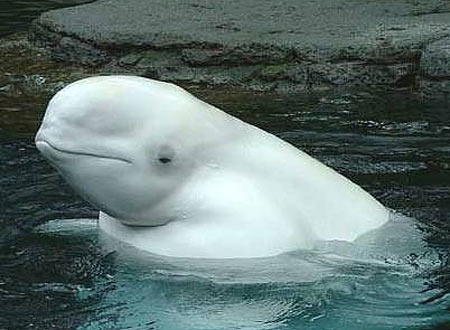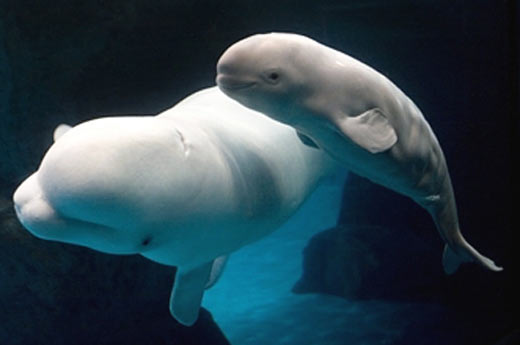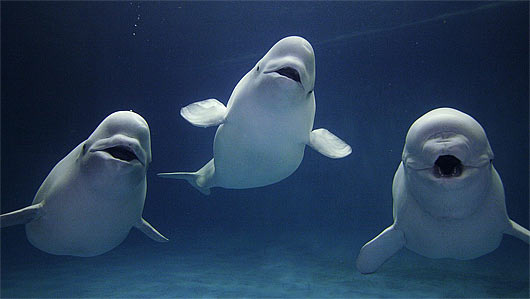Beluga – The Happy White Whale

Belugas are a species of the water mammal, the whale. They’re also known as the white whale and due to their unusual white coloring they are one of the most recognizable and easily distinguishable of all whales on Earth. In comparison to other whales they are quite a small species. They range from 13 to 20 feet (4-6 m) in length and they have rounded foreheads and no dorsal fins.

The calves of the beluga are born gray or even brown sometimes and they don’t turn white until they reach sexual maturity which is around five years old for female and around eight years for males. They mate in the spring and then in the summer they migrate in herds to warm shallow waters to have their young. Gestation is around fourteen months and the female has calves every 2-3 years. When born, a beluga calf can be up to 6 feet (1.8 m) long and weigh up to 130 pounds (60 kg).

Belugas are a social species and they live in small family groups known as pods. They are very vocal in these groups and are considered strong communicators. Their language is a mixture of separate clicks, whistles and barks. They’re also known for their amazing ability to mimic other sounds which they hear.

The beluga is found most commonly in the coastal waters of the Arctic Ocean although they can be found in subarctic waters as well. The creatures living in these conditions have to migrate in large herds southwards when the waters begin to freeze over in the colder months. Unfortunately, if a whale gets stuck, trapped or left behind they’re likely to become the prey of one of the ferocious Arctic predators such as the polar bear or killer whale. They are also hunted by the indigenous people of the Arctic region and also by commercial fisheries on occasion.

The beluga survives on fish, crustaceans and sea worms. They are quite closely related to the horned narwhal but interestingly are not related to the sturgeon known as the beluga which is known for its caviar production.
